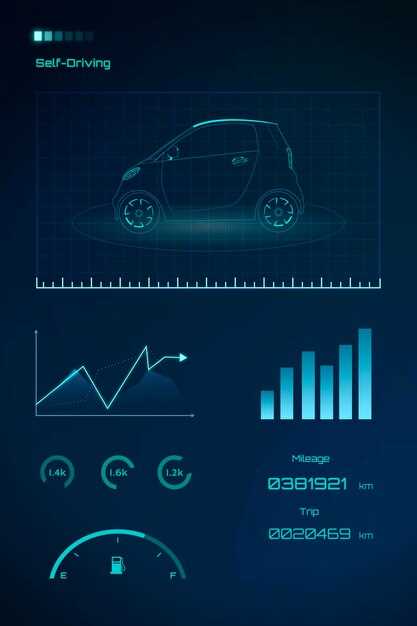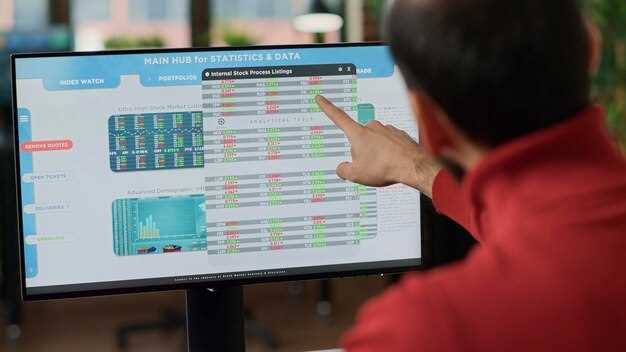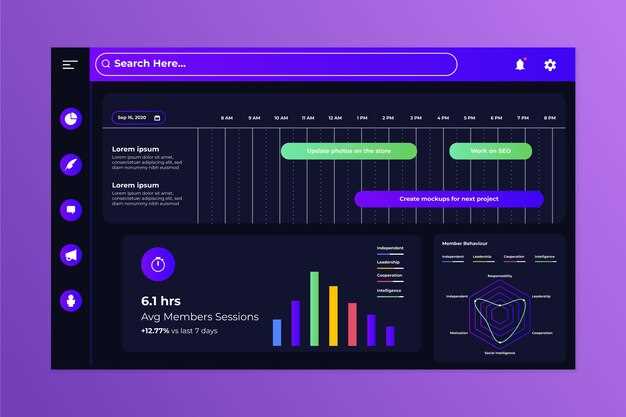
The rapid evolution of display technology is paving the way for smarter and more intuitive dashboards that transform the user experience. In an increasingly digital world, these innovative interfaces promise to streamline the presentation of information, making it more accessible and engaging. Whether in business environments, smart homes, or vehicles, the rise of digital dashboards offers a glimpse into a future where data is not just displayed, but is also interactive and actionable.
As we transition into an era defined by connectivity and real-time analytics, smart dashboards are at the forefront of this transformation. They leverage advanced algorithms and machine learning to personalize content, predict user needs, and enhance decision-making processes. This dynamic approach enables users to interact with data in ways that were previously unimaginable, reshaping how we think about display technology.
From customizable interfaces that cater to individual preferences to comprehensive digital ecosystems that integrate seamlessly with various devices, the next generation of dashboards is set to redefine our interaction with technology. The convergence of user-friendly design and cutting-edge functionality heralds a future where information is readily available at our fingertips, driving efficiency and innovation across multiple sectors.
Integrating Real-Time Data Analytics into Digital Dashboards
Integrating real-time data analytics into digital dashboards is revolutionizing the way organizations visualize and interact with their data. By embedding advanced analytics capabilities directly into smart dashboards, users gain immediate insights that drive timely decision-making and enhance operational efficiency.
One of the primary advantages of real-time data integration is the ability to monitor key performance indicators (KPIs) as they fluctuate. Smart dashboards can pull data from various sources, such as social media, sales systems, and IoT devices, displaying it in a cohesive and visually appealing manner. This dynamic display enables users to identify trends and anomalies at a glance, fostering proactive management.
Moreover, real-time analytics facilitate a deeper understanding of customer behavior. By assessing interactions as they happen, businesses can tailor their strategies to meet the evolving demands of their clientele. Smart dashboards equipped with such capabilities allow marketers and executives to refine their campaigns instantly, optimizing resource allocation for maximum impact.
The integration also enhances collaborative efforts within organizations. Team members can view and discuss live data from smart dashboards in real-time, aligning their strategies and fostering a culture of data-driven decision-making. This collaborative aspect ensures that all stakeholders are aligned and informed, ultimately driving better business outcomes.
Additionally, the use of predictive analytics within these dashboards enables organizations to anticipate future trends based on real-time data. By leveraging machine learning algorithms, smart dashboards can forecast potential outcomes, empowering users to make informed predictions and strategically plan for the future.
In conclusion, integrating real-time data analytics into digital dashboards represents a significant leap forward in display technology. It not only transforms raw data into actionable insights but also cultivates a more responsive and data-driven culture within organizations, paving the way for sustainable growth and innovation.
Choosing the Right Smart Display for Your Business Needs

Selecting the appropriate smart display is crucial for enhancing business operations and communication. A smart display can streamline processes, provide real-time data, and improve overall efficiency within an organization. When choosing a smart display, consider the specific requirements of your business, including size, functionality, and integration capabilities.
First, assess the size of the display needed for your workspace. A larger display may be beneficial for collaborative environments where multiple users interact with the dashboard simultaneously. Conversely, a smaller screen might be suitable for individual workstations or specific applications, such as point-of-sale systems.
Next, evaluate the functionalities offered by various smart displays. Features such as touch capabilities, voice control, and remote management can significantly enhance user experience and accessibility. A smart display that allows for easy navigation through interactive dashboards can lead to more effective decision-making and faster access to vital information.
Integration with existing systems is another critical factor. Ensure that the smart display can seamlessly connect with your current software applications, databases, and cloud services. This compatibility allows for the efficient display of analytics and metrics in real-time, providing a comprehensive overview of business performance.
Lastly, consider the display’s durability and support services. Investing in a robust smart display with reliable customer support can minimize downtime and enhance productivity. Look for vendors that offer warranties and assistance options to protect your investment.
By carefully analyzing these aspects, you can choose a smart display that not only meets your current needs but also adapts to future technological advancements and business requirements.
Enhancing User Experience Through Customizable Dashboard Interfaces

In the era of digital transformation, user experience has become paramount in the design of smart dashboards. Customizable dashboard interfaces stand out as a critical component, allowing users to tailor their interaction based on individual preferences and specific workflows. This personalization enhances usability and ensures that vital information is readily accessible, fostering efficient decision-making processes.
Smart dashboards leverage data visualization techniques to present information in a clear and meaningful way. Users can select widgets, arrange layouts, and adjust themes according to their needs, creating a unique digital workspace that aligns with their tasks. This adaptability not only improves engagement but also enhances productivity by minimizing the time spent navigating through irrelevant data.
Furthermore, the inclusion of interactive elements enables users to delve deeper into the data presented. Features such as drill-down capabilities and real-time data synchronization empower users to explore insights that matter most to them. This interactive approach transforms passive data consumption into an engaging experience, allowing users to derive actionable intelligence swiftly.
Moreover, customizable dashboards cater to diverse user roles within an organization. Whether for executives needing high-level overviews or analysts requiring detailed metrics, tailored interfaces support a range of functionalities and visual representations. This versatility ensures that every potential user, regardless of their role, can interact meaningfully with the data presented.
Ultimately, the culmination of customization, interactivity, and user-centric design in smart dashboards significantly enhances the overall user experience. By providing a platform that dynamically adapts to individual preferences, organizations can foster a more informed and responsive environment, paving the way for enhanced decision-making and operational efficiency.
